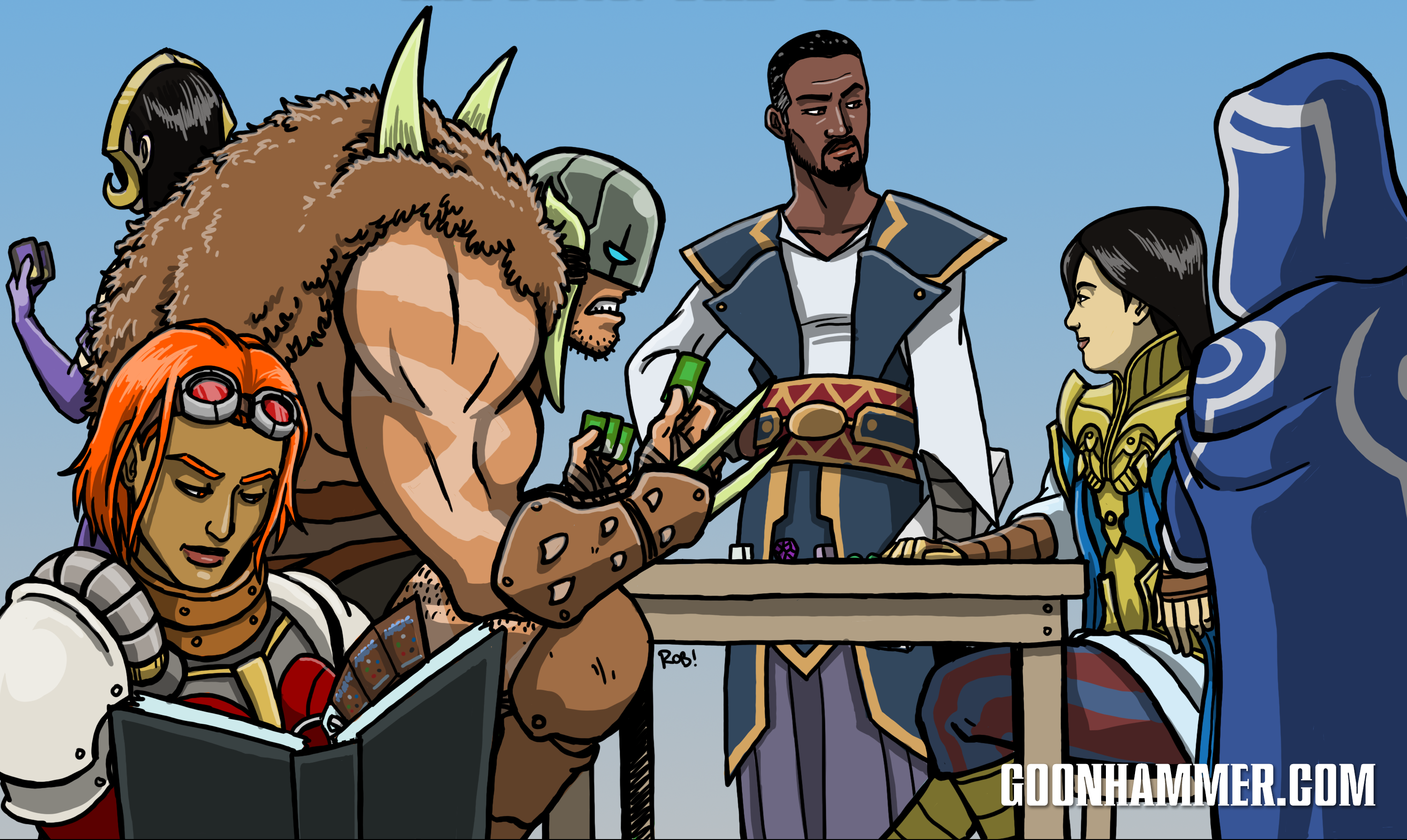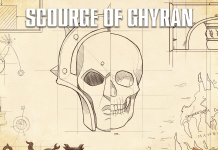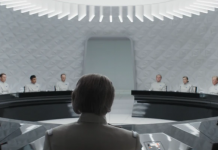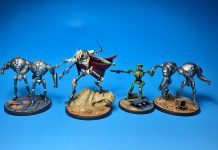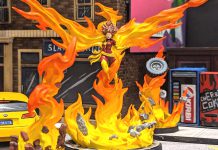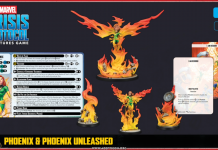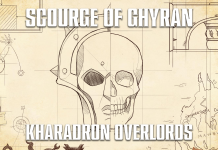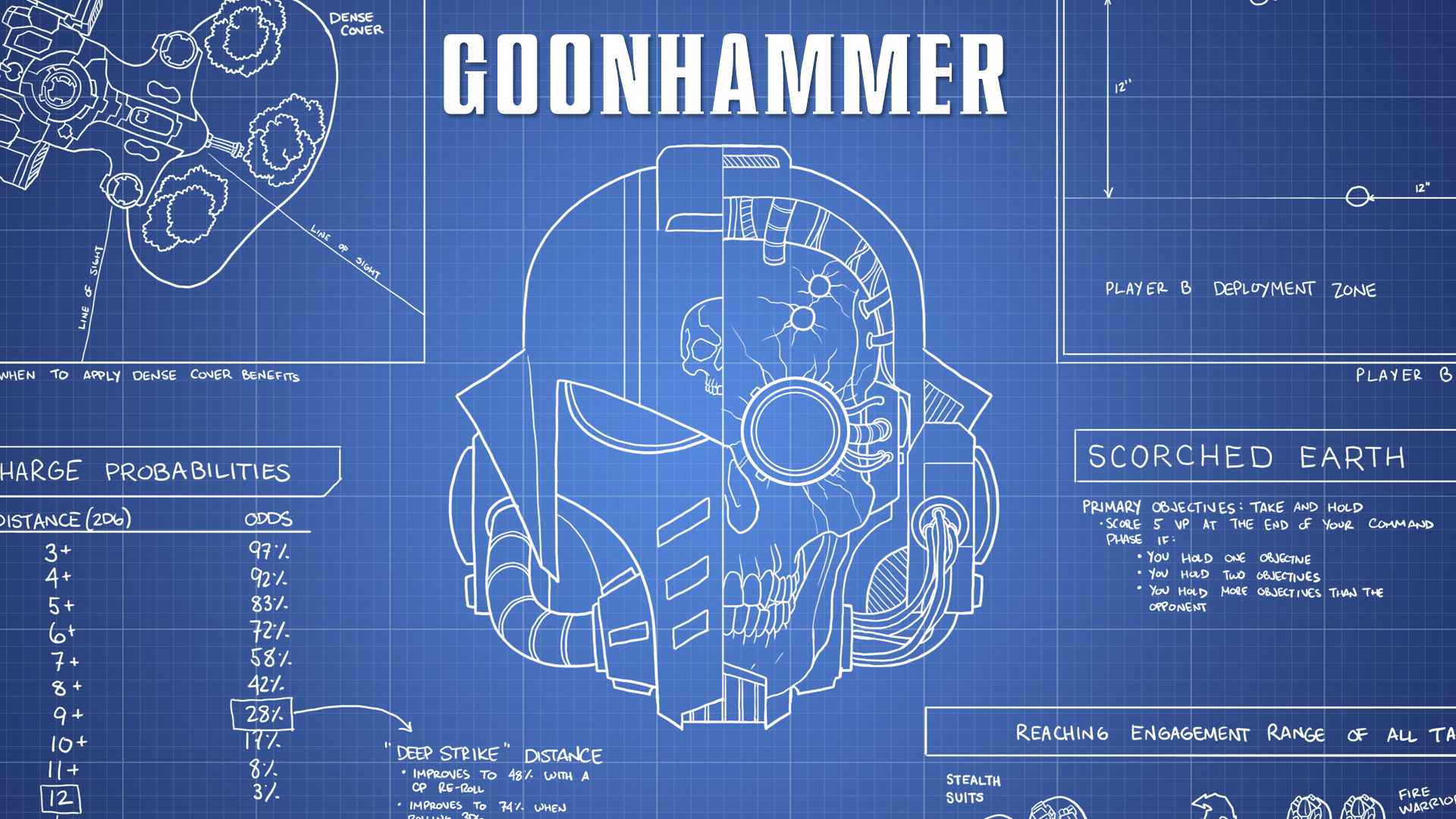Welcome to Horus Heresy Tactica, our series that provides a deep dive in a specific mechanic, interaction or aspect of play in Warhammer: the Horus Heresy.
My views on Volkite have been well-established for a while (I’ve been of the opinion that it is bad), but over the months since the release of 2nd Edition, a huge number of people have written to me to tell me that I am, in fact, wrong, and Volkite is Great Actually. I’ve run the numbers in bits and pieces here and there to double check my instincts held up, and the numbers have always confirmed my suspicions: Volkite is badly compromised by its AP and as much as I’d like it to be good, it’s just not. However, a handful of people have gone to some effort to try and present a case for Volkite in some circumstances, and I’m honestly delighted to say that my blanket dismissal of Volkite wasn’t correct – there are some great ways to use the weaponry in the game as it currently exists. However, those ways are so specific and often so close to other ways where it is bad that I need to really pick it apart in some detail. So welcome to this article, part humble pie eating competition as I eat my words about Heavy Support Squads, and part analysis to pick apart why Volkite is such a weird, contested thing in the first place.

Methodology
I wanted to just open by talking a little bit about my methodology. Despite the excellent work done by my colleagues over at Mathhammer, I’m fully aware that just running the numbers has substantial limitations. Evaluating how good a unit or weapon is can’t be done just by plugging a specific calculation in and seeing what gets spat out the other end. However, I’m also fully aware that doing the maths is important. As a friend of mine once said: Do the maths. Playtest, but also do the maths.
My analysis of the utility of units is always some mix of my personal experience with the unit in play, my read of the unit on paper with what I know of the game, my assessment of the limitations and strengths of the unit in a more general sense, and some attempt to do some maths.
In particular recently I’ve been taken with a calculation that I’m using more and more. Not because it’s the perfect way to assess a unit, but because it gives me a better sense of efficiency than any other I’ve run into. This is the “points to cause casualty” calculation – how many points of a unit will I need to cause a single casualty in a specific kind of target unit. The three key target units outside of vehicles (and vehicles are less in the realm of volkite targets, though we’ll be talking about the exceptions) I use are Tactical Squads (a single wound, toughness 4, 3+ save model), Cataphractii Squads (a two-wound, toughness 4, 2+ 4++ save model), and a Contemptor Dreadnought (A six-wound, toughness 7, 2+ 5++ save model). Not because these are the only units it’s worth considering as targets, but because they’re a good representation of the different kinds of units you’ll encounter, and also some of the most common statlines you’ll encounter. To work this out I work out how many shots are needed to cause a casualty, and then how many points a maximum strength squad is paying per shot and multiple the two together.
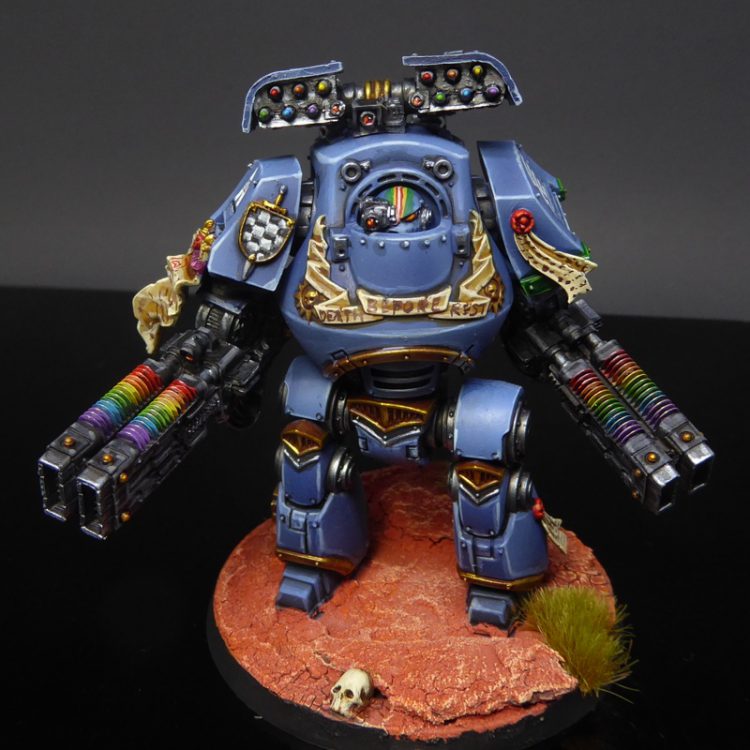
The Basic Facts of Volkite
Volkite is a kind of “ray weapon” according to the book, which according to the internet makes a “choom” noise for reasons I’ve never really understood (do you know why? Let me know in the comments below. Really, I’m fascinated). It comes in a lot of different variations from the pistol Serpenta all the way up to huge Heavy 12 Cardenelles. They come in three “tiers” of strength – the little ones (Serpentas and Chargers) having Strength 5, the serious ones (Calivers, Culverins and Sakers) having Strength 6, and the big ones (Falconet, Cardenelles and Caronades) have Strength 7 or 8.
Their ranges are generally a little shorter than their bolter equivalents, but not substantially so, and they usually have more shots. Comparing them to bolter weapons is probably the most sensible thing because they share a lot of the same role, and in the lore are the weapons bolters more or less supplanted due to ease of production. they range from the very short range in the pistols up to 45″, which the majority of the weapons actually have.
They all (with the exception of the Caronade, which is an oddity and honestly doesn’t really fit the pattern of any of these weapons, but is also a rare thing to actually pick up so I’m going to more or less ignore it) have an AP of 5 and the Deflagrate rule. This rule means you roll additional hits for every unsaved wound you inflict, having to roll to wound and then letting your opponent save the wound again. Unfortunately this runs into the major weakness of the gun, because while the to-wound roll is generally good (against toughness 4 you’re rolling at worst a 3+) your target will almost always get to save.
The combination of having to make a wound roll again and then them getting to save again massively reduces the chances of these additional hit doing anything of use, even when used on mass. Suffice to say it’s not a massive impact to their efficacy. Very very roughly you can increase the number of unsaved wounds against tactical marines by a third, and against cataphractii by a twelfth.
Volkite in Support Squads
One of the most common ways people will run Volkite is in Tactical and Heavy Support Squads. Tactical Support Squads can use either Chargers or Calivers, while Heavy Support Squads can use Culverins.
Tactical Support Squads with Chargers are short range and aggressive units, as the Chargers are Assault weapons. However, the TSS is a bad platform for this, as they are unlikely to want to charge anyway – they can’t take any melee weapons of note, and they’re ineffective in assault. A full ten-model squad will fire 20 shots within 15″ of range.
The other option is the Culverin, which is longer range (30″) and Heavy. Heavy means they’re going to be a lot less mobile, and while 30″ is a decent range it can’t compete with the longer-ranged heavier options you see in a Heavy Support Squad. Honestly, this is a weird inclusion for a TSS, but regardless a full ten-model squad will fire 30 shots within 30″ of range.
The Heavy Support Squad option is the Culverin, which is longer range still (45″) and Heavy. They’re also slower to manoeuvre, but their range is long enough it’s much less of an issue. A full ten-model squad will fire an impressive 50 shots within 30″ of range.
Now let’s look at our points per casualty calculations for each weapon choice.
All these values are rounded to the nearest point, but it paints a kind of bleak picture. A ten-model tactical support squad with chargers is 145pts (can be expected to kill just under 3 marines in each volley, no cataphractii). One with Calivers is 195pts, and so you can expect to kill 5 marines in each volley and one cataphractii, maybe wounding a second. One with Culverins is 200pts, and so you can expect to kill 9 tactical marines in one volley, or two cataphractii. This values are before deflagration so you can up those numbers a little, but not meaningfully for the terminators. What it means is that 10 Culverins can more or less be sure of wiping ten power-armoured targets with one wound.
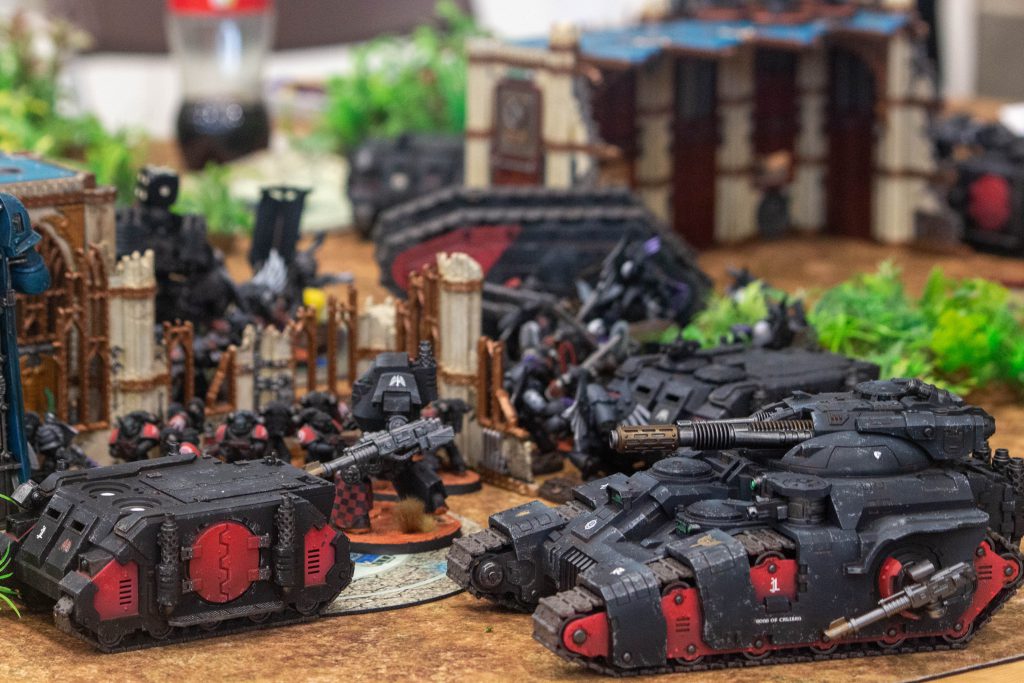
Remember, this adjusts for the points of the models holding them and also doesn’t account for anything except stopping power. That means that the longer-ranged guns are more efficient. even ignoring their range benefits. In fact, per point, the Volkite Culverin is very slightly more efficient than the Lascannon for stopping Cataphractii, and more efficient into tacticals as well (the reason lascannons continue to shine is they’re not substantially less efficient into these things and also can target dreadnoughts and vehicles with a lot of efficiency).
The conclusion? Volkite Culverins in ten-model strong Heavy Support Squads are great and I can throw up my hands and say I dropped the ball on this one. The Calivers are also surprisingly not terrible, and if you’re struggling for Heavy Support slots they deserve a look in. Chargers are the real loser here, which surprised me.
Volkite on Vehicles
It’s bad.
Ok, let me go into a little more detail. As we’ve seen above each shot of volkite can not be great (it’s mostly not, especially into targets with good armour) but it still be worthwhile overall because of volume and the points breakdown. The key here is how many shots you can pack into a unit and how low you can drop that points per shot. Culverins work well on Heavy Support Squads because you’re shooting so many shots that each shot effectively “costs” you very little. Vehicles have a huge problem here: they cost a lot more as a platform (because they’re, in theory, tougher and more mobile and so on) and they can’t load as many volkite shots onto them. Almost all vehicle platforms cap out at 18 volkite shots maximum (and that’s a slot) and you’re not guaranteed to be able to fire all of them at once. That means the price you’re paying for volkite shots is massively higher on vehicles than other platforms and you can’t shoot with all of them all the time.
As a point of comparison to compare to the above options, a Predator with Maximum Volkite (two volkite culverins as sponsons and a volkite macro-saker on the turret) has a points efficiency into Tactical Marines of 58 points per casualty and into Cataphractii of 186pts per casualty. That means this fully kitted out anti-infantry tank will kill, if it manages to get all its guns pointed the right way, under 3 Tactical Marines and not even one terminator. Yes, the platform is tougher (sort of?) and it’s more mobile, but it’s… not very efficient.
And the predator is the most efficient platform for vehicle volkite. Now one of the main arguments I’ve seen in favour of it on vehicles is that it is a defensive weapon, and this is true, but there are some problems. First of all you have a very limited number of return fire reactions so you aren’t going to be getting use out of it every time. Second, the target you’re returning fire to has to be one vulnerable to volkite – if a predator with a melta cannons shoots you then your volkite is going to do basically nothing. Third, and this is a rough one, you have to be lined up – a lot of volkite is on the sponsons, and the chances of getting to fire both is minimal, so you’re in a tough situation where the theoretical output of the tank is always a good bit higher than the reality.
In conclusion, volkite on vehicles isn’t a good choice in my analysis. I’ve heard a lot of ideas about why I’m wrong on this, but I also notice that I don’t see volkite turn up in lists at tournaments or events very much at all (while I do see Culverin HSSs which honestly was a big prompt to taking a closer look). If you’ve got an argument as to why they’re worth looking at again, please please let me know.
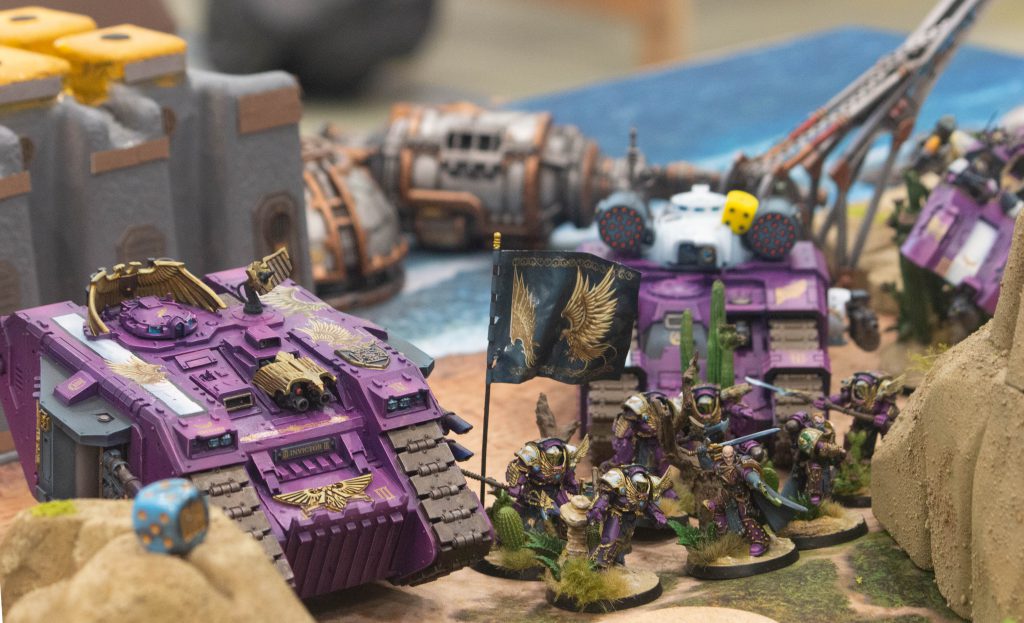
One thing that I think people get wrong is that I don’t like options being bad. I want a perfect world where all this cool shit is as cool on the table as it is in our heads. I just also don’t want someone to spend a lot of time and money building cool tanks covered in volkite only to be sad every time they hit the table.
Volkite into Other Things
We’ve been focusing on marines so far, so let’s look at some other possible targets.
First of all: vehicles. You can shoot volkite into vehicles but for the most part it’s not really worth it. The heavier volkite options (Falconets and Cardenelles) actually are ok into light vehicles in terms of doing some damage (like against Rhinos or side or rear armour of Predators) but they’re broadly the only ones. However there’s an exception: Iron Warriors. If you’re an Iron Warrior player, congratulations, your Volkite Culverin squad can also slap the hell out of light vehicles, and do it with volume too.
Second, Custodes. Basically these are the same as firing volkite into Cataphractii, so you can just consult those numbers. Because of the high cost per model though, this is actually pretty good and if you’re facing down a custodes army with lots of angry golden boys in it, consider sneakily picking up 20 culverins.
Third, Mechanicum. Since the armour values don’t change enough to matter hugely, Volkite is broadly worse into mech than marines as they’re having to tackle higher toughness ratings. However, the one exception is thralls, and Volkite Culverins in particular rip through them as they double out for Instant Death and thus deny the Feel No Pain roll.
Finally, Auxilia. You’d think this would be where Volkite shines brightest but… no not really. They’re slightly better into Auxilia than Tactical Marines because they’re only contending with a 4+ save but also auxilia are substantially cheaper so they probably care less. Heavy Bolters are actually the MVP here because they can ignore that 4+ save entirely.
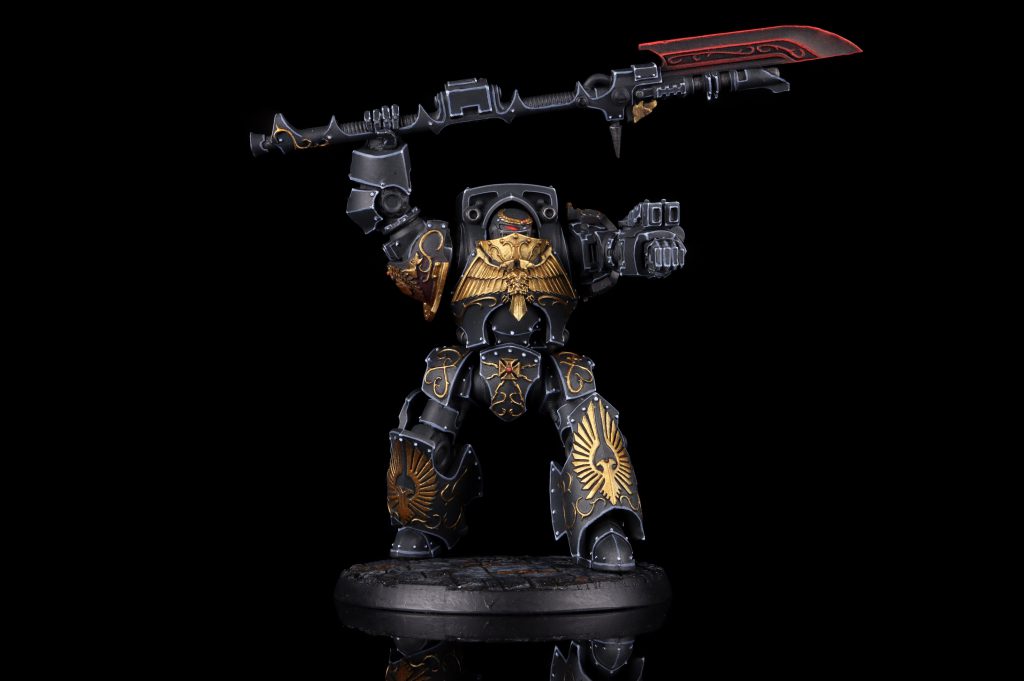
Conclusions
Volkite does have a use, and I was wrong to dismiss it so totally. Heavy Support Squads with Volkite Culverins are actually a great choice, and the Calivers aren’t terrible either (pretty good as far as tactical support squads go, which is to say not great but not rock bottom). However I can’t see any argument for them going on vehicles in most cases, and they’re ironically a better bet into Custodes than into Auxilia despite what your instincts might say.



